A dryer vent eliminates excess heat produced during the drying cycle. Thus, the vent should be well directed to prevent fires. If you wonder whether you can vent a dryer into the attic, you came to the right place. We researched the topic, and this is what we discovered.
The International Residential Code permits you to vent a dryer via the attic but not halt venting there. Instead, the vent should exit through the attic's roof, as this avoids filling your attic with warm, moist air. If left to accumulate, the warm, moist air can damage your attic's insulation and cause the rotting of wooden frames.
There is so much to learn on how to vent a dryer correctly. Tag along as we discuss whether it is okay to vent a dryer indoors. We will also discuss the proper way to vent your dryer through the attic and explore whether you can safely run a dryer without a vent. Without further ado, let's get into it.
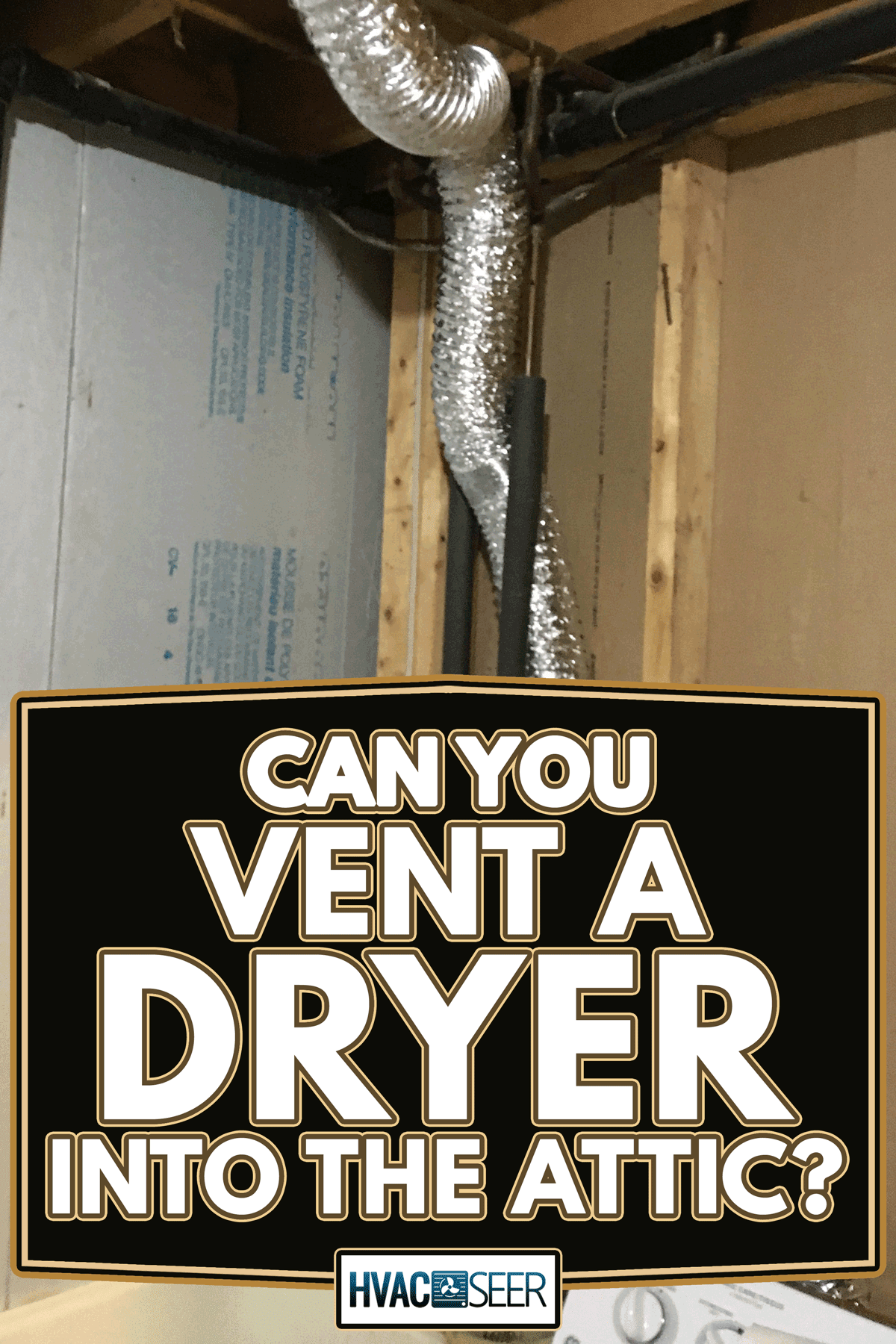
Is It Okay To Vent A Dryer Indoors?
While dryers provide a fast and reliable way to dry clothes, they generate a significant amount of warm, moist air during the drying cycle. In addition, the air also contains highly flammable lint. Thus, it is a critical consideration how to safely discard the byproducts generated from the drying process.
It is not advisable to vent a dryer into indoor spaces, be it an attic, crawlspace, or other rooms inside the house. However, the dryer vent can pass through these spaces and terminate outdoors. Make sure to keep the dryer vent's length within the acceptable limit.
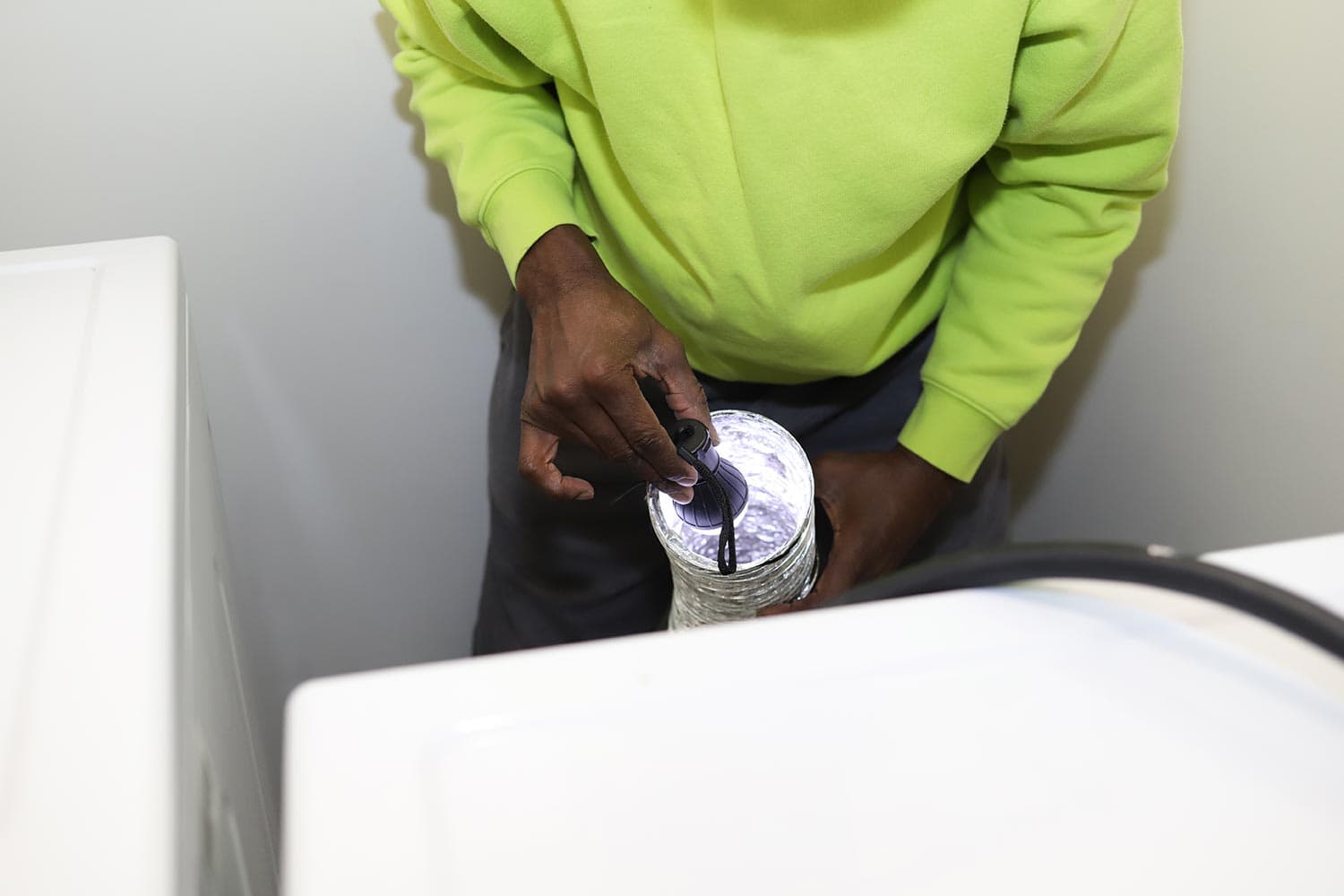
Major Problems Associated With Venting A Dryer Indoors
Below are some significant problems usually associated with venting dryers indoors and some solutions that you could apply to fix them.
Mold Buildup
Releasing the moisture extracted when drying clothes creates a humid environment which promotes mold buildup. This mold forms an unsightly view and increases respiratory infections among those in your household.
Mold grows on floors, walls, carpets, clothes, and even furniture. It then releases its spores into the indoor air, deteriorating indoor air quality. You may suffer from allergic reactions such as red eyes, sneezing, runny nose, or skin rash when you inhale or touch the spores.
High Relative Humidity
High relative humidity in indoor spaces causes condensation to form. This is triggered when warm air reaches cold surfaces such as windows and walls. The condensation can lead to external cladding and mold and mildew growing behind wall linings, posing health risks.
Humidity can also wreak havoc on your roof, resulting in structural decay. The nails and other metallic roofing materials that are not galvanized can rust. Rusting weakens these materials, diminishing the amount of weight they can support.
If the insulation absorbs the excess moisture, its thermal performance suffers. Water has a higher thermal conductivity than air. As it replaces the insulating air, the insulation's effectiveness deteriorates. Consequently, it becomes more challenging to regulate the temperature in your home.
Wooden structures such as frames and drywall can absorb moisture and begin to rot. This high relative humidity deteriorates your home's structural integrity since the wood swells, causing the nails to loosen. You eventually incur costly repair expenses.
Your energy bills will skyrocket with increased relative humidity since the AC and dehumidifier will need to work harder to keep your home cool and comfortable. Also, the dryer will take longer to dry clothes, thus consuming more energy.
Fire Risk
Although dryers are fitted with lint traps to catch the lint produced during drying, some of it still escapes through the vent into indoor air. If you vent your dryer indoors, the lint will accumulate quickly. This buildup poses a fire risk since it is highly combustible, mainly when venting the dryer into the attic.
Like mold spores, lint causes allergic reactions. For this reason, the possibility of respiratory infections will increase in your home.
How To Vent A Dryer Through The Attic
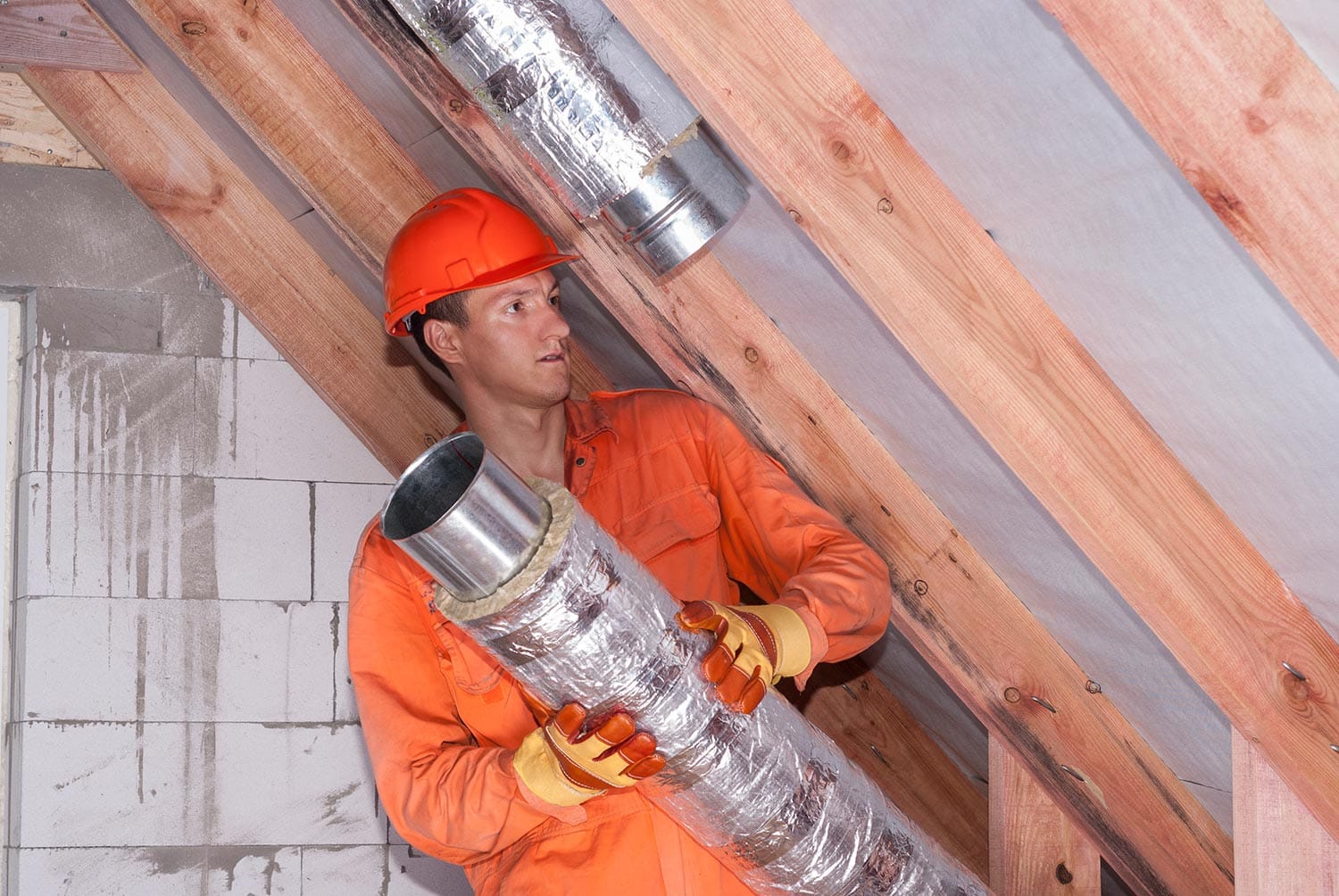
You may not always be able to vent a dryer to the outside through the exterior wall. In such instances, venting the dryer through the attic may be necessary. The International Residential Code allows you to do this. But it is best to consult your dryer's manual to confirm that this is possible.
You will need:
- Measuring tape
- Special roof vent
- Bi-metal hole saw
Check out this bi-metal hole saw on Amazon.
Step-By-Step Guide
- Measure the distance from the dryer to the exhaust point on the roof.
- Use the bi-metal hole saw to drill a hole that measures around 4.5 inches on the attic floor. Please inspect for any obstructions or wires before cutting to avoid damaging them.
- Install the dryer vent through the hole made. Secure the vent using brackets and screws.
- Join the special roof vent to the vent coming from the top of the roof, and fix the vent cap on the roof using screws. The International Residential Code stipulates that you should use a 4-inch galvanized pipe for the vent. The special roof vent will keep the rain from entering your attic.
- Caulk around the edges of the vent cap and let it dry to seal it.
Important Considerations
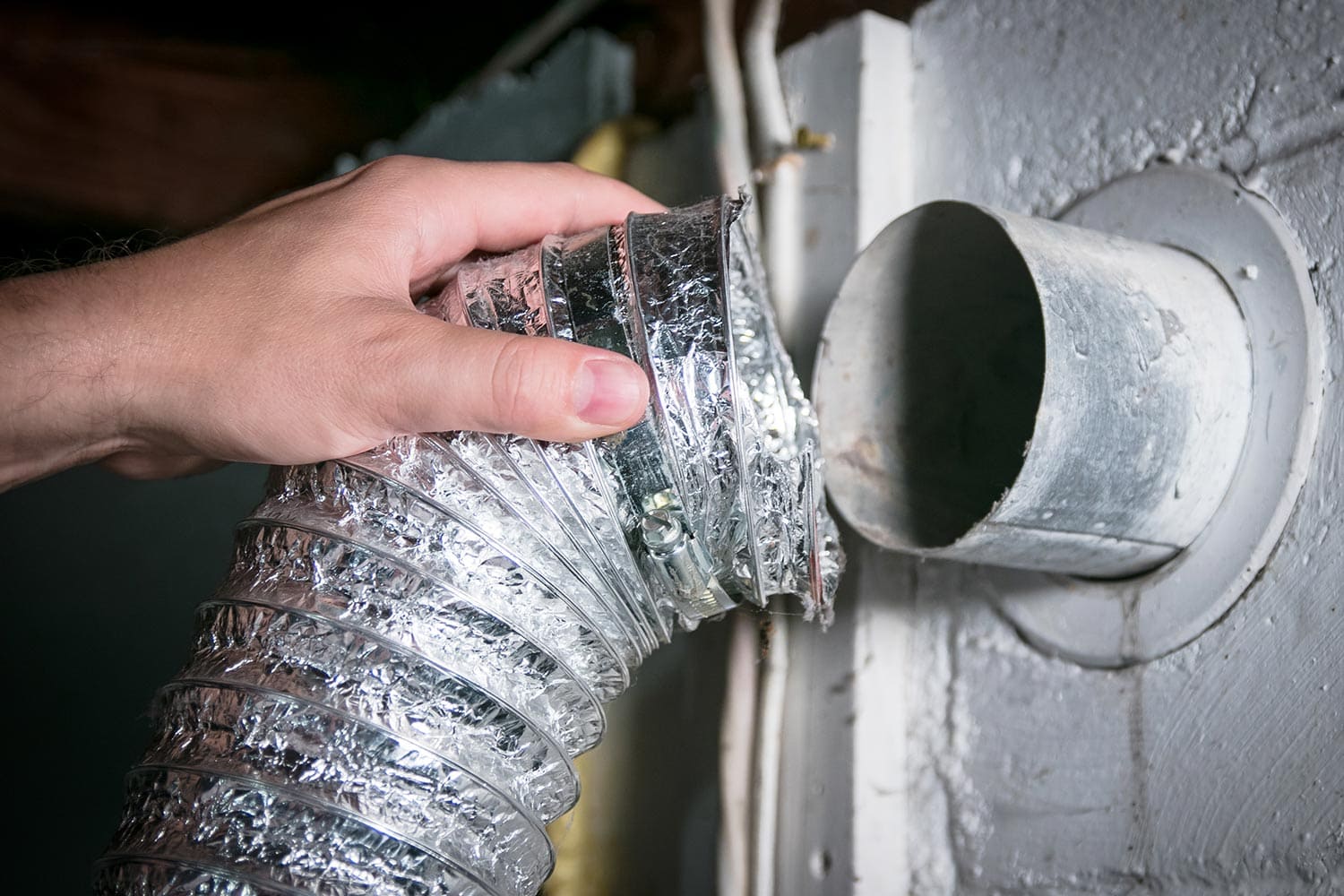
Keep the vent pipe that goes to the exhaust vent straight to minimize condensation. The upward slope enables the condensate to drain back towards the dryer. Regularly unhooking the vent from the dryer and cleaning it can help you regulate condensation.
Insulating the vent ducts can also help control condensation. Water droplets do not form on the pipes since the insulation keeps the ducts warm.
Read more: What Is The Best Insulation For Pipes?
If the vent pipe extends for a long distance, ensure as minimal elbow connections as possible. You can also install a booster vent fan in the duct if you need to increase its length.
Check out this booster fan on Amazon.
In addition, confirm that the duct joints face the vent outlet. Support the pipes with clamps or strapping to avoid sagging. Proper support minimizes the possibility of lint buildup.
Use foil-backed tape to hold the joints in place rather than sheet metal screws that extend into the pipe and can trap lint. The foil-backed tape guarantees a longer service life than duct tape, which can fail after a few years.
Take care to maintain at least a 3-foot distance between the vent opening on the roof and any other openings in the building. Do not use a screen to cover the vent opening. But the cover you use for the vent opening should keep water and small animals such as birds and rodents out of the vent.
Can You Safely Run A Dryer Without A Vent?
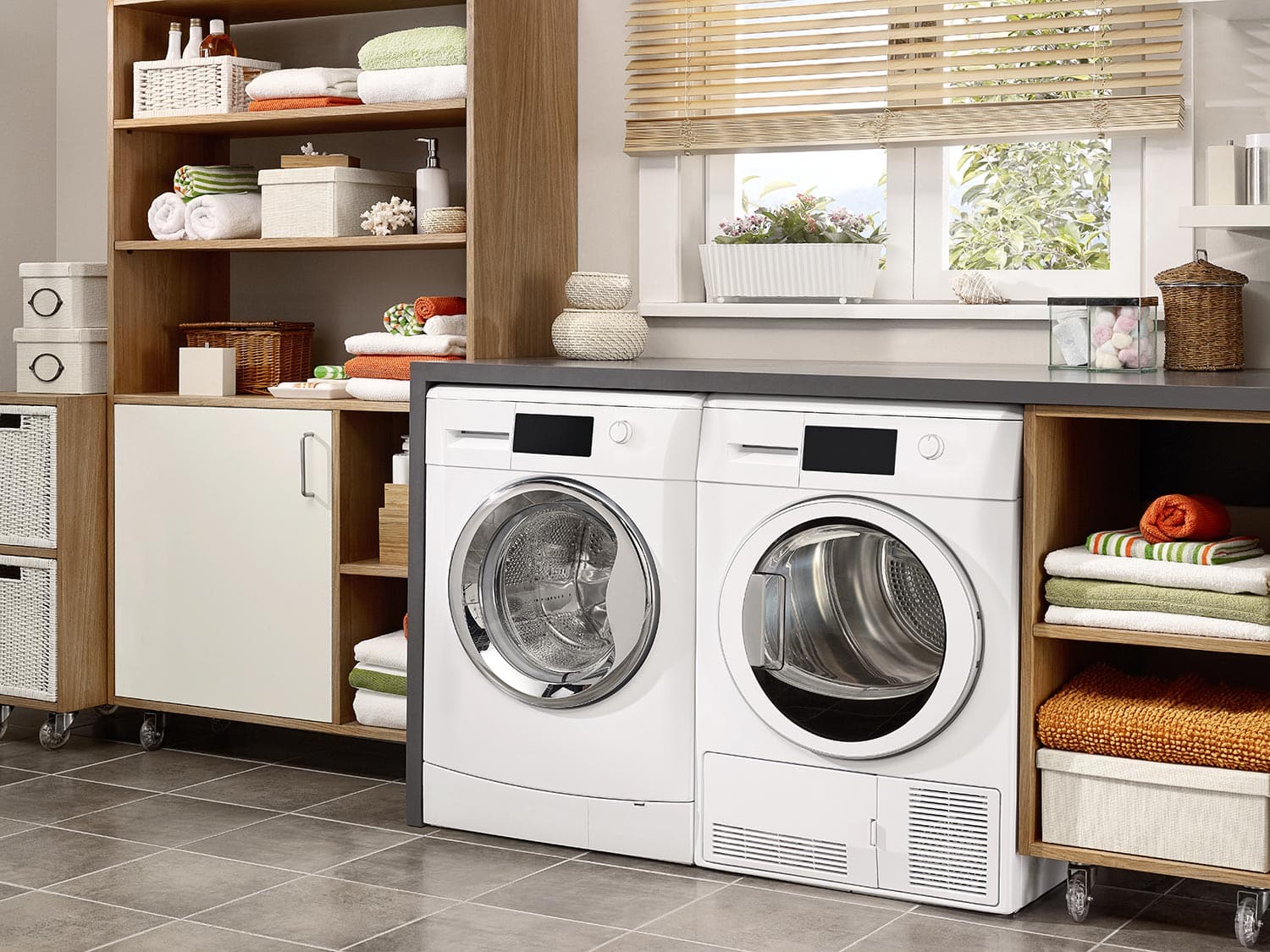
Dryers need proper ventilation to let heat, moisture, and lint outdoors. While most dryers require a vent to operate efficiently, some dryers, such as heat pumps and condenser dryers, do not need a vent.
You can use indoor or outdoor dryer vents to emit the dryer cycle byproducts. The indoor dryer vent blows hot air into the laundry room while the outdoor air ejects it outside. Please note that you cannot use the vents interchangeably.
Use indoor dryer vents with electric dryers only. It would be best if you vented gas dryers to the outside to avoid carbon monoxide poisoning. If you use a gas dryer, installing a carbon monoxide alarm in your laundry room is advisable as an extra precaution.
Check this carbon monoxide alarm on Amazon.
Safety Precautions When Using A Dryer Without A Dryer Vent
When dealing with electronic appliances, safety should always be a priority. Below are some of our tips and precautions when using a ventless dryer.
Enhance Proper Air Circulation
Keep doors and windows open when operating the dryer to get rid of the warm and moist air as soon as it is generated. You can also use a fan to increase air circulation.
Install Lint Traps
Lint traps keep lint from escaping into the indoor air. Regularly clean the lint trap to keep it from building up and becoming a fire risk. Cleaning the lint trap also improves your dryer's efficiency.
Final Thoughts
You should only vent a dryer through the attic as a last resort. Ensure that the vent does not terminate in the attic but goes through the roof. Keep the vent pipe as straight as possible and support it properly to avoid trapping lint along the vent's length.
Keep your laundry room well ventilated even when the dryer does not need venting. Proper ventilation enhances the dryer's efficiency, preserves indoor air quality, and protects your home's structural integrity.
You may also be interested in learning: How To Insulate Around A Dryer Vent



